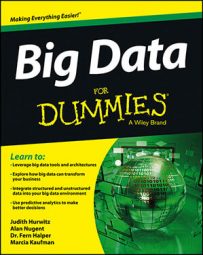Big data is of enormous significance to the healthcare industry — including its use in everything from genetic research to advanced medical imaging and research on improving quality of care. While conducting big data analysis in each of these areas is significant in furthering research, a major benefit is applying this information to clinical medicine.
If enough data is captured, this data can be applied practically and quickly at the right time to help save lives. Medical clinicians and researchers are using streaming data to speed decision making in hospital settings and improve healthcare outcomes for patients.
Doctors make use of large amounts of time-sensitive data when caring for patients, including results of lab tests, pathology reports, X-rays, and digital imaging. They also use medical devices to monitor a patient’s vital signs such as blood pressure, heart rate, and temperature.
While these devices provide alerts when the readings go out of normal range, in some cases, preventive action could take place if doctors were able to receive an early warning. Subtle changes in a patient’s condition are often hard to pick up with a physical exam, but could be picked up by monitoring devices if a way existed to have more immediate access to the data.
Monitoring devices used in intensive care units generate thousands of readings every second. In the past, these readings have been summarized into one reading every 30–60 minutes. These devices were monitoring very large volumes of data, but because of technology limitation, much of that data was not available for analysis.
Using streaming technology, a hospital university research team is able to capture the data stream from bedside monitors and process it using algorithms designed to look for early warning signs of serious infections.
The data is used in real time to provide early warnings of changes in a patient’s condition. In some situations, doctors are finding that they are able to take corrective action to help a patient almost 24–36 hours earlier than without the data-streaming technology. Another benefit is the ability of doctors to compare the analysis to a database of patient outcomes that could provide additional insight.

